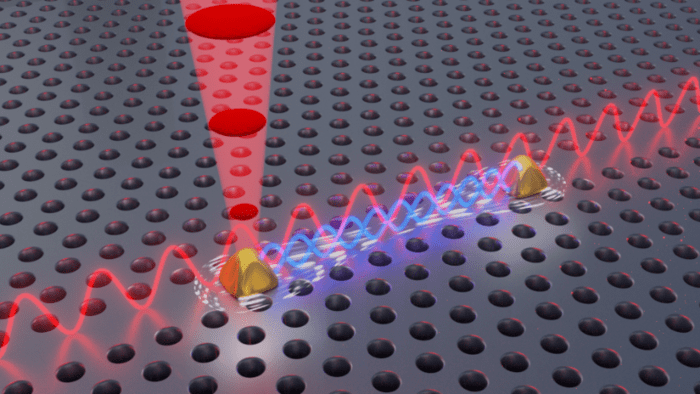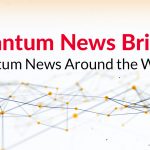Researchers from the Niels Bohr Institute have Found a New Way to Entangle Two Quantum Light Sources

Because of its fragile state, creating quantum entanglement within a laboratory setting is not for the faint of heart. Many researchers have tried for years to develop stable sources of quantum light to use in generating entanglement but to no avail. Recent research, however, may offer some assistance. Scientists at the Niels Bohr Institute have developed a new method to control two quantum light sources and entangle them, publishing their results in the journal Science. Because quantum computers leverage entanglement, this new result could offer some significant benefits in developing this next-generation technology.
Setting the (Nano) Stage
To control these two quantum light sources, the Niels Bohr Institute researchers use a nano chip as the setting for their experiment. This chip is slightly larger than the diameter of a human hair, illustrating the impossibly tiny scale of the experiment. According to University of Copenhagen professor Dr. Peter Lodahl: “We have demonstrated quantum entanglement between two quantum emitters (solid-state quantum dots) coupled by a nanophotonic waveguide. Usually, this coupling is very weak, ie. falls off very rapidly with emitter separation, but in the nanophotonic waveguides, we can extend this coupling by many optical wavelengths. The quantum dots are deterministically coupled to the photonic waveguide, i.e. they can be operated as deterministic sources of high-quality single photons or even multi-photon entanglement sources.” This new method of coupling waveguides with quantum dots has big implications for other experiments in quantum entanglement. “Being able to deterministically entangle two such sources is a big step forward for scaling up the technology,” Lodahl added.
What Does this Mean for Quantum Computing?
This new method also suggests big things for the future of quantum computing, utilizing entangled quantum dots. As Lodahl explained: “Photonic quantum computers operate by creating large-scale entangled sources of photons and the algorithm encoded by carrying out only single-qubit measurements on the photons. Deterministic quantum dot single-photon sources are highly favorable since they allow producing the photon resource states ‘on-demand’, which has been missing previously where photon entanglement was only generated by ‘consuming’ many probabilistic single photon sources leading to a massive resource overhead when scaling up. Entangling two quantum dots is a major step forward since with such systems photon entanglement enabling universal quantum computing can be realized. Since each quantum dot can emit a deterministic train of photons, each quantum dot can generate a huge qubit resource.” This suggests big things for error correction specifically. “Ultimately a fault-tolerant photonic quantum computer is expected to be realizable with just 20-30 quantum dot sources – a massive reduction in the required overhead compared to alternative methods” Lodahl added. As many companies and researchers are striving to improve current methods of error correction, this new method could provide significant benefits.
These entangled quantum dots can also be beneficial for applications of quantum computing. “Quantum dot sources are already being put to use in real-world quantum key distribution field trials,” Lodahl stated. “The more advanced entanglement sources may find applications for a fully device-independent quantum key distribution system or a one-way quantum repeater.” As cybersecurity is predicted to be one of the biggest applications for quantum computing, the already-shown successes for quantum dots suggest a smoother transition into using them within a quantum computing system.
Moving from the Niels Bohr Institute to Industry
For Lodahl, the improvements in generating quantum entanglement still have a long way to go. “It is important that some of the engineering challenges are seriously addressed,” he explained. “This includes improving fabrication yield and reproducibility, packaging of the optical chip, and improving ease of operation.” To help with these improvements, Lodahl is working outside of the Niels Bohr Institute and instead has founded a startup company called Sparrow Quantum. Lodahl believes that Sparrow Quantum will help with these issues “by bringing these single-photon chips on the market.” Besides improving these issues, Lodahl is excited to see the fast-paced expansion of the industry, suggesting other improvements as well. “All this development is currently progressing at a very rapid pace, so I am confident that we will continue to see very exciting developments on this platform in the near future,” he added.
Kenna Hughes-Castleberry is a staff writer at Inside Quantum Technology and the Science Communicator at JILA (a partnership between the University of Colorado Boulder and NIST). Her writing beats include deep tech, the metaverse, and quantum technology.























